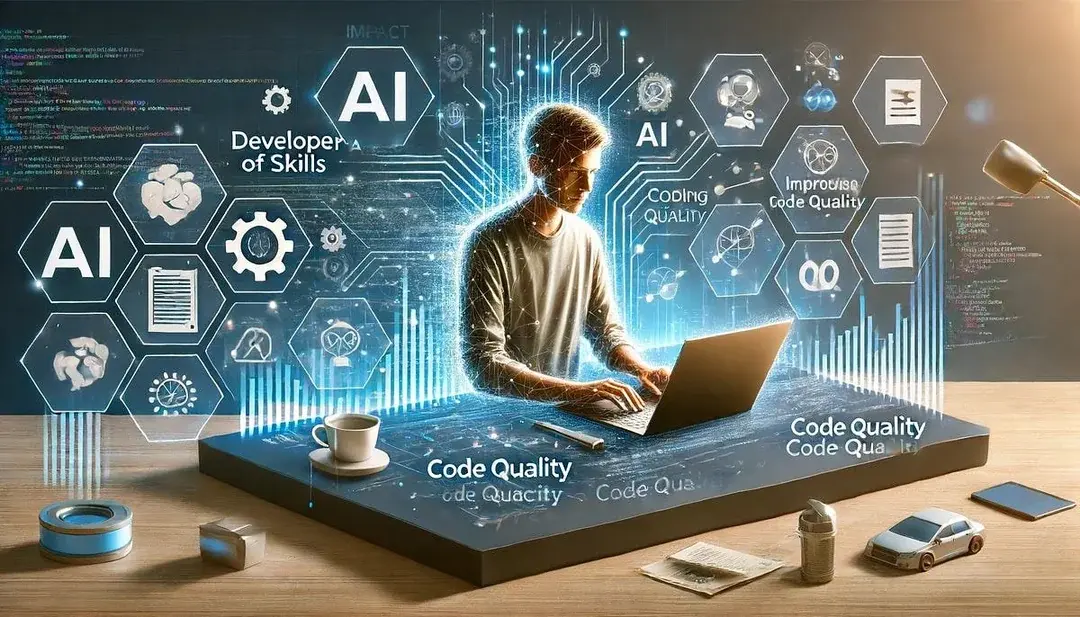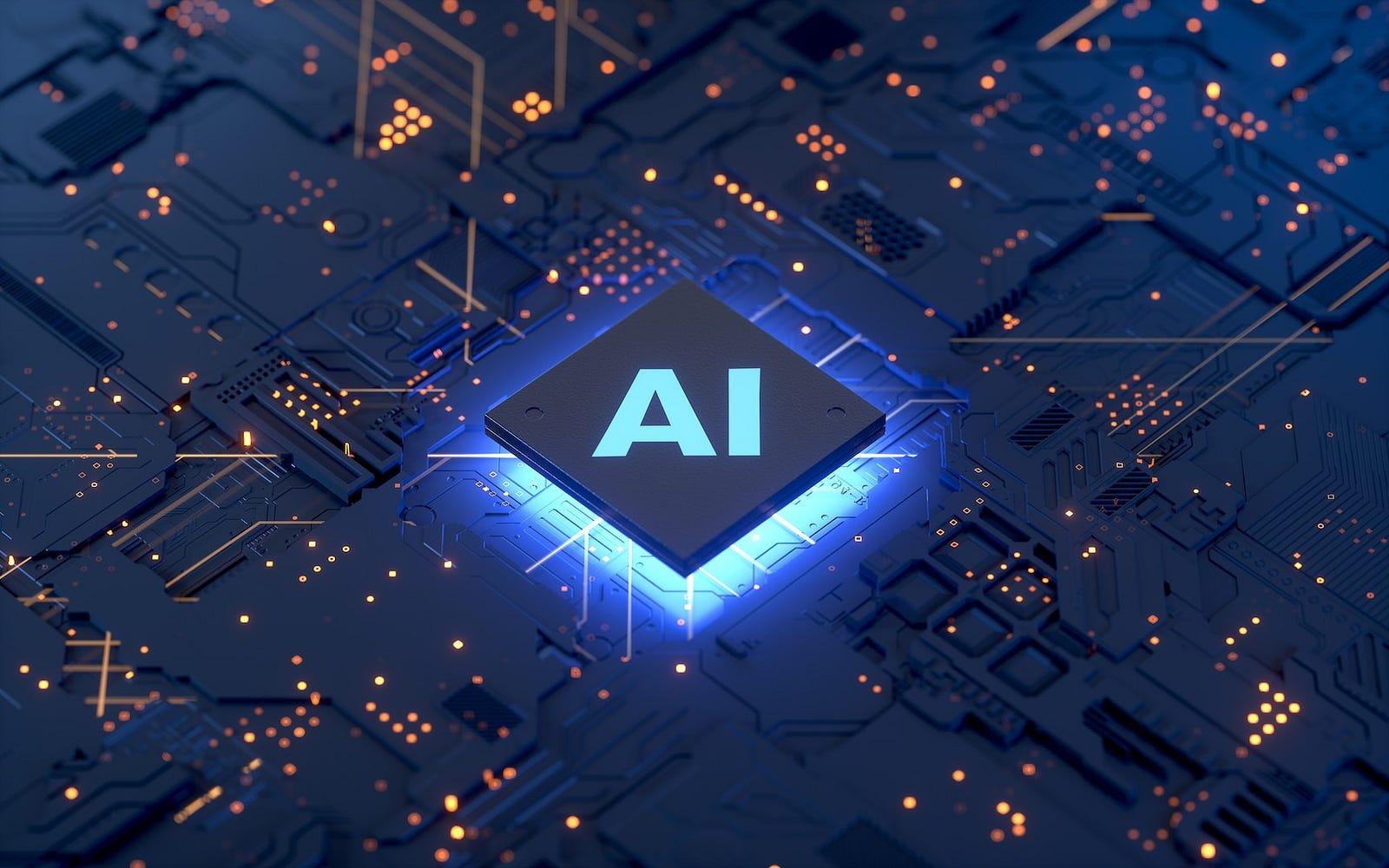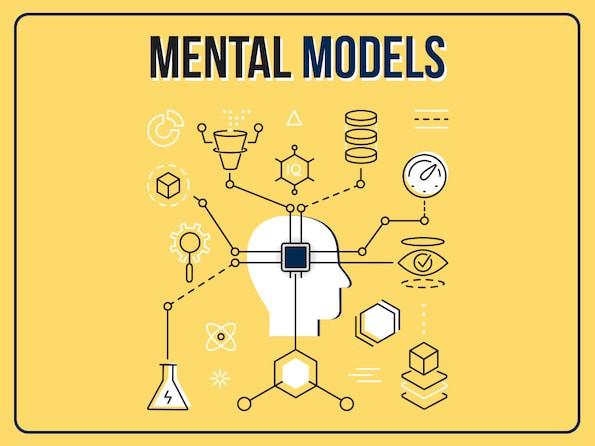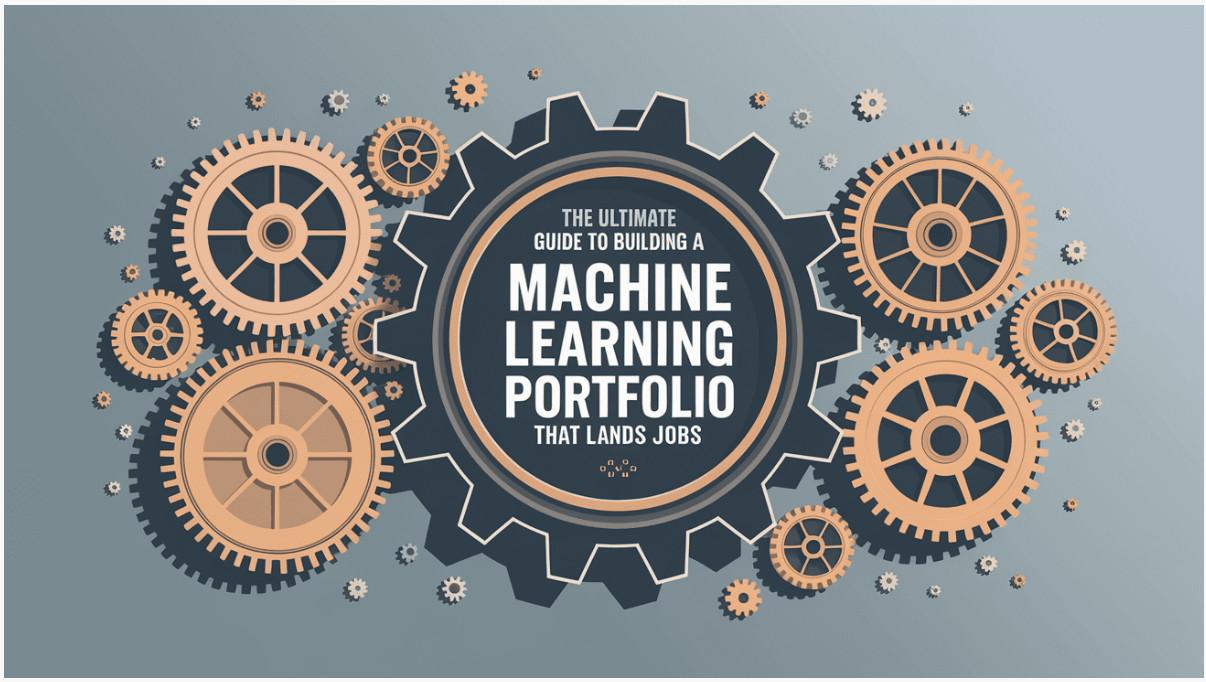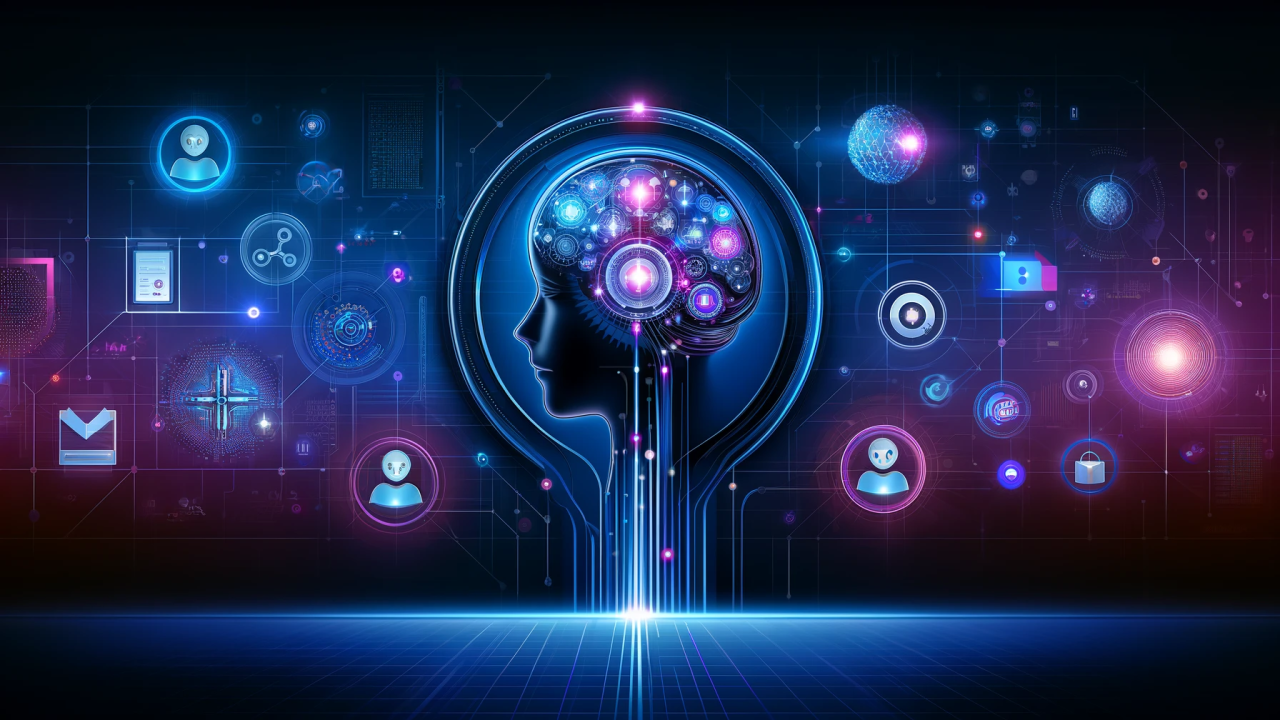Introduction - The New Dilemma for Modern Engineers
Ten years ago, a coding interview tested one thing: your logic under pressure. You’d sit in front of a whiteboard, marker in hand, and race the clock to prove you could build something from scratch. The idea was simple, great engineers think clearly when there’s nowhere to hide.
Fast-forward to 2025, and that assumption no longer fits the real world. Engineers don’t work in isolation anymore, they work with AI.
Tools like GitHub Copilot, Amazon CodeWhisperer, Tabnine, Replit Ghostwriter, and ChatGPT’s developer mode now autocomplete not just code, but thought processes. They write loops, generate tests, and optimize runtime before you’ve even hit “enter.” For most developers, this isn’t cheating, it’s just work.
But here’s where things get complicated:
When you enter an interview, the rules change. The same AI that makes you a 10x engineer at work can make you a 0x candidate in an interview.
The new dilemma is this:
If AI is part of modern engineering, why is it banned in the very interviews that claim to test “real-world skills”?
This contradiction sits at the heart of hiring in 2025. Recruiters and candidates are playing a game that neither fully understands.
From the company’s side, the logic is fairness, how do you measure genuine skill if one candidate uses AI and another doesn’t?
From the candidate’s side, the logic is authenticity, how do you showcase your true ability if you’re forced to work without the same tools you’d use on the job?
This blog unpacks that tension, technically, ethically, and psychologically, showing you when to use AI assistants, when to avoid them, and how to integrate them into your preparation in a way that enhances credibility, not risk.
Why This Matters More Now Than Ever
AI-assisted coding is not a niche productivity hack anymore; it’s the new default.
According to GitHub’s 2024 Developer Productivity Report, 92% of developers use AI tools for at least one part of their workflow. Among ML engineers, that number jumps to 97%.
So, the question isn’t “Do you use AI?”, it’s “How do you use it?”
Yet, most interview systems haven’t caught up. They still assume a pre-AI skill set, one where memory recall and syntax accuracy matter as much as reasoning and trade-offs. That’s why today’s interviews feel increasingly disconnected from actual engineering.
You’re solving binary trees in a vacuum while knowing full well that, in real work, you’d call a helper library or let Copilot suggest the function signature in seconds.
This dissonance creates anxiety, a subtle identity crisis for engineers. You’re being asked to prove your “individual thinking” in a world that now celebrates collaborative intelligence between humans and machines.
The New Psychology of AI-Assisted Interviews
AI’s presence in interviews isn’t just a technical change; it’s a psychological shift.
The mere availability of an AI tool changes how your brain encodes problem-solving. Neuroscience studies from Stanford (2024) show that access to AI support reduces cognitive strain but also reduces active retrieval, the process by which the brain strengthens problem-solving memory through struggle.
In other words, when AI fills in the blanks for you, your brain never gets the “learning reward” dopamine spike associated with independent solution-finding.
That’s why over-reliance on AI in prep can make you feel confident but perform worse when the tool is gone.
So, if you’ve ever done brilliantly on practice problems at home but stumbled in an interview without Copilot, it’s not a fluke, it’s a neurobiological mismatch. You trained with a safety net and got tested without one.
The Stakes for 2025 Engineers
The rise of AI coding assistants has created a two-tiered skill divide:
- Engineers who understand AI, using it as an amplifier.
- Engineers who depend on AI, using it as a replacement.
Interviewers are trying to tell these groups apart. That’s why your ability to explain, reason, and make trade-offs under pressure now matters more than ever.
In other words:
AI can help you solve problems, but interviews reward those who can articulate them.
If you can’t verbalize why your model’s code works, or if you rely on AI phrasing, interviewers notice immediately. The best engineers today don’t compete with AI; they collaborate with it consciously and explain that collaboration clearly.
Key Takeaway
The real question isn’t whether you should use AI in interviews.
It’s how you should train with it to strengthen your human edge.
Because the companies hiring in 2025 aren’t looking for pure coders anymore, they’re looking for judgment engineers: professionals who can balance automation with accountability, efficiency with ethics, and speed with understanding.
That’s what this blog will teach you to demonstrate.
Section 1 - How Companies Actually View AI Use in Interviews
One of the most confusing aspects of the AI era isn’t how these tools work—it’s how companies perceive their use in interviews. Engineers preparing for FAANG or AI startups often whisper the same question:
“If I use Copilot or ChatGPT to prepare, am I cheating—or just being efficient?”
The truth is nuanced. No global standard exists yet. Some organizations are aggressively banning AI assistance, while others are quietly experimenting with integrating it into their hiring processes. Understanding where each company stands—and why—can help you navigate interviews confidently and ethically.
a. The “No-AI” Traditionalists: Guarding Fairness and Integrity
Large, established companies like Amazon, Google, and Apple sit firmly in the “no-AI” camp. Their reasoning isn’t anti-innovation—it’s about standardization.
Amazon, for instance, updated its technical interview guidelines in early 2025 after several candidates were caught using Copilot during online assessments. In an internal recruiter memo leaked to Business Insider, Amazon clarified:
“Use of AI-generated or AI-assisted code during technical evaluations, unless explicitly authorized, will be considered misrepresentation.”
The company’s stance stems from three principles:
- Consistency: Interview evaluations must be comparable across all candidates. If one uses AI and another doesn’t, objectivity collapses.
- Confidentiality: Take-home assignments often mirror proprietary projects. Letting that data flow through third-party APIs could breach internal security protocols.
- Cognitive Assessment: Interviews exist to measure reasoning, not efficiency. Amazon already knows AI can autocomplete; it wants to know how you think when you can’t.
Google and Apple share similar logic. Their internal coding platforms monitor typing patterns and clipboard events, not to “spy,” but to detect non-human pacing anomalies that might indicate AI use.
In short, these companies treat interviews as simulations of first-principles thinking. You’re evaluated not for the final answer but for your decision-making path.
b. The “AI-Friendly” Innovators: Measuring Collaboration, Not Isolation
At the other end of the spectrum are forward-looking organizations like Meta, Replit, and Anthropic, which see AI collaboration as the future of software work.
In early 2025, Wired reported that Meta had begun piloting “AI-inclusive technical rounds.” In these sessions, candidates are allowed to use assistants like Copilot or ChatGPT—but their evaluation metrics change. Instead of testing speed, Meta interviewers assess:
- Prompt engineering skill: Can you ask the right question to get the right code?
- Judgment: Do you know when to accept, modify, or reject AI suggestions?
- Comprehension: Can you explain the logic behind generated code as if you wrote it yourself?
Essentially, the interview becomes a collaborative reasoning test. It mirrors what modern engineers do in production: integrating human oversight with machine-generated output.
Replit—whose own product, Ghostwriter, is an AI assistant—takes this even further. Its technical hiring includes optional AI-aided rounds where candidates can demonstrate how they work with tools rather than around them. Replit’s CTO summed it up in an internal blog post:
“We don’t ban calculators from math tests when the job is to design them. Why ban AI from interviews for engineers who’ll build with it every day?”
Similarly, Anthropic—creator of the Claude model—encourages candidates to use LLMs during take-home assignments, as long as they explicitly document how they did so. The company sees this transparency as a reflection of research integrity and alignment ethics.
This approach reframes the interview from a “pure knowledge test” into an AI-literacy assessment: Can you collaborate responsibly with advanced tools?
c. The Middle Ground: Startups and Academic Labs
Between these extremes lies the gray zone—startups, smaller tech firms, and academic labs that haven’t formalized policies yet.
Their stance is often unspoken:
“Use whatever helps you learn—but make sure you understand it.”
In practice, this means:
- Using AI for brainstorming or refactoring is fine.
- Using it to generate full submissions or hide gaps is not.
- Disclosing your use honestly can even earn respect.
For example, an ML startup in San Francisco recently interviewed two candidates for the same role. Both solved a take-home project perfectly. When asked in follow-up interviews, one admitted using Copilot “to scaffold tests,” and clearly explained each improvement; the other denied using help but couldn’t justify function design choices.
Only the first candidate got the offer.
Why? Because the company didn’t punish AI use—it punished dishonesty and lack of comprehension.
Transparency is becoming the new differentiator. It signals intellectual maturity and ethical awareness—qualities every growing company values. Check out Interview Node’s guide “The New Rules of AI Hiring: How Companies Screen for Responsible ML Practices”
d. Why Policies Diverge So Widely
The divergence in company attitudes isn’t random—it reflects differences in business models and talent philosophy.
| Company Type | Hiring Philosophy | AI Policy Trend |
| Big Tech (FAANG) | Evaluate individual reasoning under pressure | Restrictive (AI banned during interviews) |
| AI-First Companies (Meta, Anthropic) | Evaluate human–AI collaboration skill | Permissive (AI allowed with transparency) |
| Startups & Labs | Evaluate learning speed + adaptability | Flexible (AI tolerated, honesty expected) |
Each approach serves its mission. Amazon needs predictable, scalable evaluation for 50,000 hires a year. Replit and Anthropic need creative engineers who can co-evolve with AI.
What this means for candidates: You must tailor your prep strategy to your target company’s AI philosophy.
- Applying to Amazon? Train manually—no AI crutches.
- Interviewing at Anthropic or Replit? Practice prompt discipline—how to query AI effectively and critique outputs.
- Unsure? Always default to honesty.
e. The Hidden Interviewer Perspective
To really understand company attitudes, you need to see through an interviewer’s eyes.
When an interviewer says, “We don’t allow AI tools,” what they mean is:
“I need to see how your brain structures the unknown.”
Interviews compress uncertainty into two hours. The only observable proxy for long-term potential is your reasoning chain. If AI tools fill that gap, the interviewer loses their signal.
That’s why even AI-progressive companies still limit tool use in certain rounds. They’re not rejecting the future—they’re isolating variables to evaluate human thinking.
Interviewers are also adapting. Many now insert meta-prompts:
- “How would your approach change if you had Copilot here?”
- “Would you trust an AI’s suggestion for this logic?”
- “How would you verify its correctness?”
Your ability to answer thoughtfully reveals whether you’re a tool operator or a tool critic—and that distinction is becoming the most valuable skill in modern hiring.
f. The Emerging Consensus: Transparency, Adaptability, and Ethical Awareness
Across industries, a new consensus is forming:
- Transparency matters more than prohibition.
- AI collaboration is inevitable; what counts is how responsibly you handle it.
- Human reasoning remains the final evaluation metric.
In essence, companies aren’t anti-AI—they’re anti-unexamined use. They don’t care that you used ChatGPT to learn recursion; they care whether you understand recursion when the AI is gone.
The smartest engineers treat interviews like real production work: you’re still the owner of the final commit, no matter who helped you write it.
Key Takeaway
In 2025, the hiring landscape isn’t divided between “AI users” and “AI avoiders.”
It’s divided between those who use AI transparently and critically versus those who use it secretly and blindly.
Companies reward the former with trust—and trust is still the ultimate hiring currency.
AI may assist your thinking, but integrity amplifies your credibility.
Check out Interview Node’s guide “The New Rules of AI Hiring: How Companies Screen for Responsible ML Practices”
Section 2 - When You Should Use AI Coding Assistants and When You Definitely Shouldn’t
If there’s one truth every modern engineer needs to internalize, it’s this:
AI tools are only as valuable as the intention behind their use.
AI coding assistants like GitHub Copilot, Amazon CodeWhisperer, and ChatGPT are extraordinary accelerators, but in interviews, they can either make you exponentially stronger or quietly sabotage your thinking process. The difference lies not in whether you use them, but when and how.
Let’s unpack that distinction in detail.
a. Why Timing Matters: The Brain’s “Effort Window”
Every learning cycle has what neuroscientists call an effort window, the short, intense stretch of time where your brain builds the deepest understanding. When you’re stuck on a bug or unsure how to optimize an algorithm, your brain’s prefrontal cortex spikes in activity, forming new problem-solving pathways.
Now, when an AI assistant jumps in too early, it short-circuits that process. You get the answer faster, but your brain doesn’t encode why it’s correct. This is called premature cognitive closure, and it’s one of the main reasons many engineers who prep with AI feel confident but perform inconsistently in live interviews.
A 2024 Stanford HCI Lab study found that participants who used AI assistants for every coding task had 35% faster completion times but 42% lower retention of underlying logic after 48 hours.
So yes, AI makes you faster today, but possibly weaker tomorrow if used incorrectly. The key is learning to use it after struggle, not instead of struggle.
Check out Interview Node’s guide “The Hidden Metrics: How Interviewers Evaluate ML Thinking, Not Just Code”
b. When You Should Use AI Assistants: The Smart Training Scenarios
AI coding tools shine when you use them for reflection, validation, and experimentation, not as autopilots. Here’s when their use actually strengthens your preparation:
✅ After You’ve Tried Manually
First, attempt the problem on your own. Only when you’ve reached your limit should you ask the AI for help. This sequence turns AI from a crutch into a feedback mirror.
Example: After implementing BFS, ask, “Can you show me three alternative BFS approaches in Python and their time complexities?”
✅ For Conceptual Deep Dives
Ask the AI to explain concepts in interview language. For instance:
“Explain the difference between bias and variance like I’m answering an ML interview.”
This helps you practice communication clarity, one of the hidden metrics in behavioral rounds.
✅ For Self-Critique and Code Review
Use the AI as a second pair of eyes:
“Review this code for readability and potential edge cases.”
Then analyze its feedback. If it points out issues you missed, document them in your prep log.
✅ To Simulate Peer Collaboration
In system design prep, ask the AI to “play the role of a senior engineer” and challenge your decisions:
“You chose Kafka over Kinesis, defend your reasoning.”
This builds the critical muscle of justifying trade-offs, a core FAANG interview skill.
✅ To Explore Alternatives
Once you’ve solved a problem, ask AI for different paradigms: dynamic programming vs. recursion, hash-based vs. tree-based. This broadens your algorithmic fluency, a trait interviewers love.
Used this way, AI becomes a thinking amplifier, not a replacement.
Check out Interview Node’s guide “Mock Interview Framework: How to Practice Like You’re Already in the Room”
c. When You Should Not Use AI: The High-Risk Scenarios
Just as there are smart use cases, there are moments when using AI will directly undermine your credibility, learning, or both.
🚫 During Live or Proctored Interviews
If a recruiter or platform explicitly prohibits AI, never risk it.
Interview platforms like HackerRank and CodeSignal now log keyboard patterns, tab-switch frequency, and paste actions. If your code style changes mid-problem, or if you paste a perfect function suddenly, you’ll be flagged.
Even if you “get away” with it, the follow-up question “Can you explain your code?” exposes you instantly. Few things end an interview faster than not being able to explain your own solution.
🚫 When It Becomes a Habit
If every practice session begins with AI assistance, your reasoning reflex weakens. You start solving through AI, not through thinking. That’s the equivalent of training with a weightlifter who lifts half your load, you’ll feel powerful until you’re tested alone.
Check out Interview Node’s guide “The Hidden Metrics: How Interviewers Evaluate ML Thinking, Not Just Code”
d. The “Train-With, Perform-Without” Framework
At Interview Node, we teach candidates a neuroscience-informed framework to maximize benefits while avoiding dependency:
| Stage | Goal | AI Role | Example |
| Manual Baseline | Build independent reasoning | None | Solve a problem from scratch under timed conditions |
| AI Comparison | Expose blind spots | Analyzer | Ask AI for alternate solutions and compare |
| Reflective Practice | Reinforce learning | Teacher | Ask AI to explain your code back to you |
| AI-Off Simulation | Stress-test recall | None | Re-attempt problem without AI or notes |
| Meta-Review | Strengthen verbal reasoning | Coach | Have AI play interviewer and challenge logic |
This method mirrors ML model training: supervised learning (AI exposure) followed by validation (manual testing). Over time, your “mental weights” increase, building both speed and understanding.
The result? When the real interview comes, you’ll sound structured, confident, and authentic, the holy trinity of interview success.
e. The Ethical Dimension: Using AI Transparently
Transparency isn’t optional anymore; it’s strategic.
When interviewers ask, “How did you prepare?”, mentioning AI tools like Copilot or ChatGPT doesn’t disqualify you, it differentiates you. Follow up with:
“I used AI tools to explore multiple patterns, but I always verified and practiced manually afterward.”
That single line communicates maturity, accountability, and awareness, traits interviewers trust.
The key is control. If you can articulate why you used AI and how you validated it, you prove that you’re the pilot, not the passenger.
f. The Long-Term Payoff
Mastering controlled AI use gives you a long-term edge. You’ll not only perform better in interviews but also work better post-hire. Employers increasingly value engineers who can leverage AI responsibly, debug its hallucinations, and evaluate its trade-offs.
In short, knowing when not to use AI is the new professional intelligence.
True expertise isn’t automation - it’s discernment.
Check out Interview Node’s guide “Mock Interview Framework: How to Practice Like You’re Already in the Room”
Conclusion - The Tool vs. The Thinker
There’s a temptation, in every era of technological change, to swing to extremes. Some engineers swear by AI, convinced it’s the future of coding; others reject it completely, fearful that it dilutes authenticity. But the truth lies between these poles, in mastery, not avoidance.
AI coding assistants are now the modern engineer’s second brain. They amplify creativity, speed, and coverage. They free you from boilerplate, from syntax, from the thousand small cuts that once drained your cognitive bandwidth. But interviews, those strange, compressed simulations of your professional self, exist to test what happens when those conveniences are stripped away.
And that’s the paradox: the best engineers in the world are those who can collaborate with AI deeply, but think independently without it.
In real work, you’ll use Copilot, CodeWhisperer, or ChatGPT daily. You’ll brainstorm architectures, generate documentation, and even debug using LLMs. That’s the new norm. But in interviews, you need to demonstrate something rarer: cognitive transparency. The interviewer wants to see your thinking path, how you approach uncertainty, how you test hypotheses, how you decide when the code is “good enough.”
AI can’t simulate that. It can’t narrate your reasoning or justify your trade-offs. Only you can.
That’s why the modern engineer’s goal isn’t to reject AI or overuse it, it’s to master the balance.
To know when to turn it on and why to turn it off.
When you use AI in your preparation ethically, as a teacher, not a crutch, you sharpen both systems of intelligence: machine speed and human sensemaking. You enter interviews not just ready to code, but ready to explain. You can show that your collaboration with AI is deliberate, structured, and grounded in understanding.
The next generation of technical interviews will not be about AI versus humans, it will be about humans who can reason about AI.
Those who master that distinction, the thinkers, not just the typers, will be the ones leading the teams that design the next Copilot.
Check out Interview Node’s guide “The Psychology of Interviews: Why Confidence Often Beats Perfect Answers”
FAQs, AI Coding Assistants in Interviews
1. Is it cheating to use AI tools like Copilot or ChatGPT for interview prep?
No, as long as you use them for learning and feedback, not direct completion. Ethical prep means you understand every suggestion AI provides. Think of it as learning from a mentor who never tires. The key is comprehension: if you can’t reproduce or explain AI output independently, you’re crossing into dependency, not preparation.
2. Can companies detect AI-assisted code during technical interviews?
Yes. Platforms like HackerRank, CodeSignal, and Codility now embed keystroke and clipboard tracking. They flag pasted or unusually uniform code. Recruiters also compare code structures to AI-generated patterns. If caught, most candidates are immediately disqualified, not for the AI use itself, but for dishonesty. Transparency is always safer than concealment.
3. What’s the difference between using AI to “prepare” and to “perform”?
Preparation is about learning; performance is about demonstration. AI can accelerate your understanding, generate variants, or explain complexity during prep. But in interviews, you must show original reasoning. The rule of thumb: AI can train your instincts, but you must own your output.
4. Are there companies that actually allow AI use in interviews?
Yes, a growing number. Meta, Replit, and Anthropic have begun testing AI-inclusive rounds where candidates can use assistants but must justify every choice. The focus is on collaboration quality, not output speed. However, unless explicitly permitted, always assume AI is not allowed during interviews.
5. If AI is part of my daily workflow, why can’t I use it in interviews?
Because interviews test transferability, not efficiency. Employers want to see if you can reason through novel problems under pressure, without tools. In the real world, AI will help you code; in interviews, reasoning is the skill under evaluation. They’re testing your mental model, not your IDE extensions.
6. What’s the best way to use AI responsibly in interview prep?
Follow the “Train-With, Perform-Without” framework.
1️⃣ Try manually.
2️⃣ Ask AI for feedback.
3️⃣ Analyze differences.
4️⃣ Re-solve without AI.
This approach builds both recall and reasoning resilience. Use AI for reflection, not for rescue.
7. How do interviewers spot AI dependency even without detectors?
They listen for weak explanation chains. If you can’t describe your approach in plain language, or if your phrasing mirrors AI-style syntax (“Given an array of integers…”), it’s a giveaway. Interviewers don’t need logs, your delivery exposes whether you’ve thought independently or not.
8. Should I disclose AI use if I’m asked how I prepared?
Absolutely, and confidently. Saying, “I used AI tools like Copilot for exploration, but practiced implementing and explaining everything manually,” positions you as modern and ethical. Recruiters respect transparency; it signals professional integrity and adaptability.
9. Can AI actually make me worse at interviews?
Ironically, yes, if you rely on it too early or too often. Studies show that immediate AI assistance reduces problem-solving strain, which weakens memory consolidation. You feel fluent but lose mental endurance. Always practice “AI fasting” before interviews, a few weeks of fully manual coding strengthens recall and confidence.
10. What if my interviewer explicitly allows AI during the session?
Use it as a collaboration test. Narrate your prompts aloud (“I’ll ask Copilot to generate boilerplate, then optimize it manually”) and critique its results. Demonstrating discernment and prompt clarity proves leadership-level thinking. You’re being evaluated on judgment, not obedience to the model.
11. Should I mention AI proficiency on my résumé?
Yes, strategically. Phrases like “Experienced in AI-assisted development workflows” or “Proficient in leveraging Copilot and ChatGPT for productivity and code review” signal modernity. But never inflate, recruiters will probe how you use these tools critically.
12. Is using AI in take-home assignments ever acceptable?
Only if the prompt explicitly allows it. Otherwise, it’s risky. If you do use AI for minor tasks (formatting, documentation), disclose it in your README. Integrity beats secrecy; most hiring managers appreciate honesty over perfect output.
13. What’s the cognitive reason to sometimes avoid AI during prep?
Your brain builds long-term reasoning through effortful retrieval. AI short-circuits that by providing instant closure. To encode logic deeply, you need struggle, a few minutes of uncertainty strengthens neural connections far more than passive observation. AI is best used after that productive struggle.
14. Will interviews eventually allow AI permanently?
Yes, but selectively. By 2027, expect two parallel interview formats:
1️⃣ “AI-Free Rounds” to test individual cognition.
2️⃣ “AI-Collaborative Rounds” to assess judgment and ethics.
You’ll be evaluated both as a thinker and a collaborator, human reasoning will still anchor both.
15. What’s the single biggest mistake engineers make with AI in interviews?
Using it as a substitute for thought. AI tools should mirror your logic, not dictate it. Engineers who blindly copy completions lose credibility fast. The best use AI to test their reasoning, not to replace it. Always ask, “Do I understand why this works?” before trusting any output.
✅ Final Takeaway
AI has blurred the line between assistance and authorship. But the essence of interviews hasn’t changed: clarity, composure, and integrity still win.
The companies leading the AI revolution, Meta, Anthropic, OpenAI, don’t want engineers who fear AI. They want engineers who can reason about it responsibly.
So use AI boldly. Learn from it relentlessly.
But when you walk into that interview, leave it behind, and let your mind prove what no machine can replicate: judgment, understanding, and voice.
AI can write your code, but only you can explain your choices.

